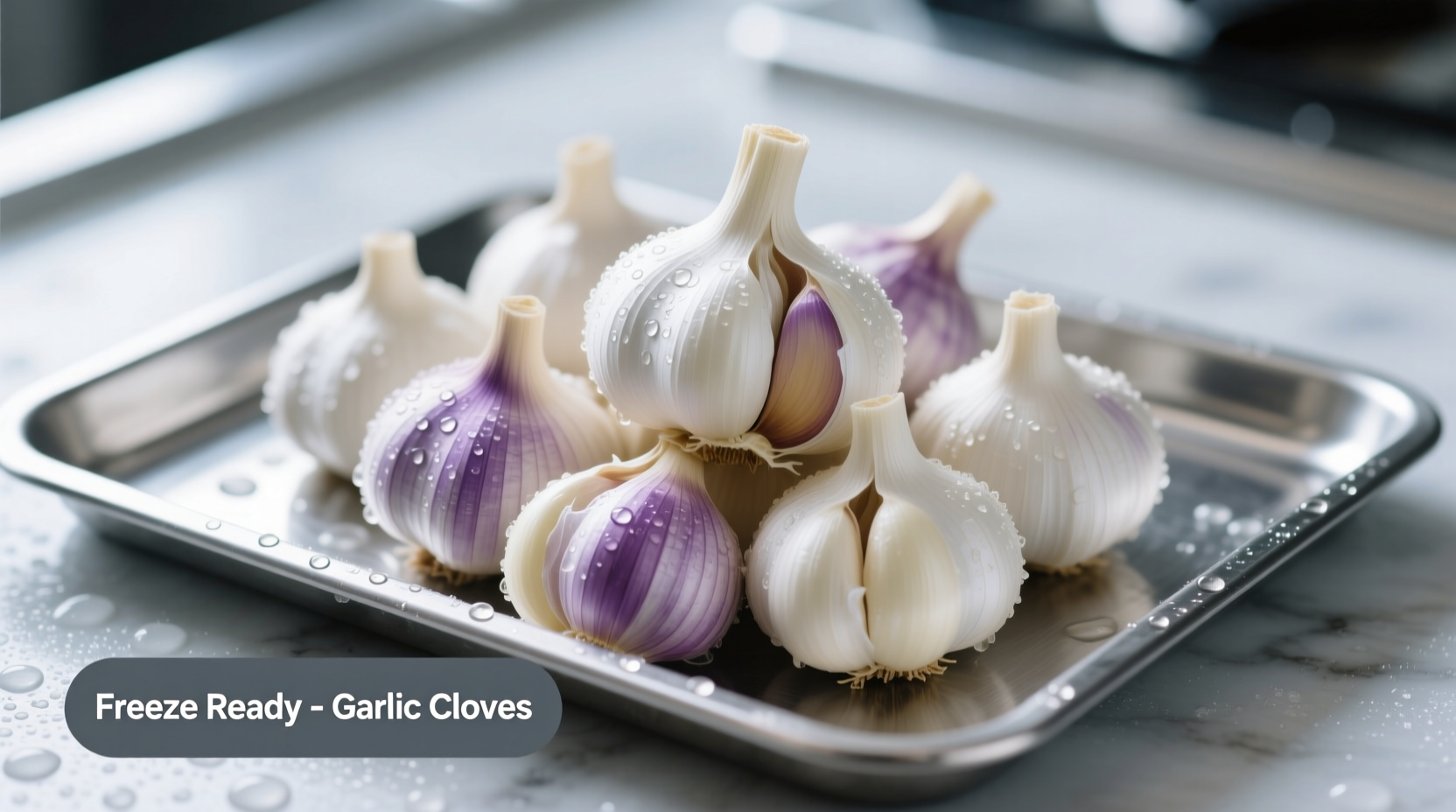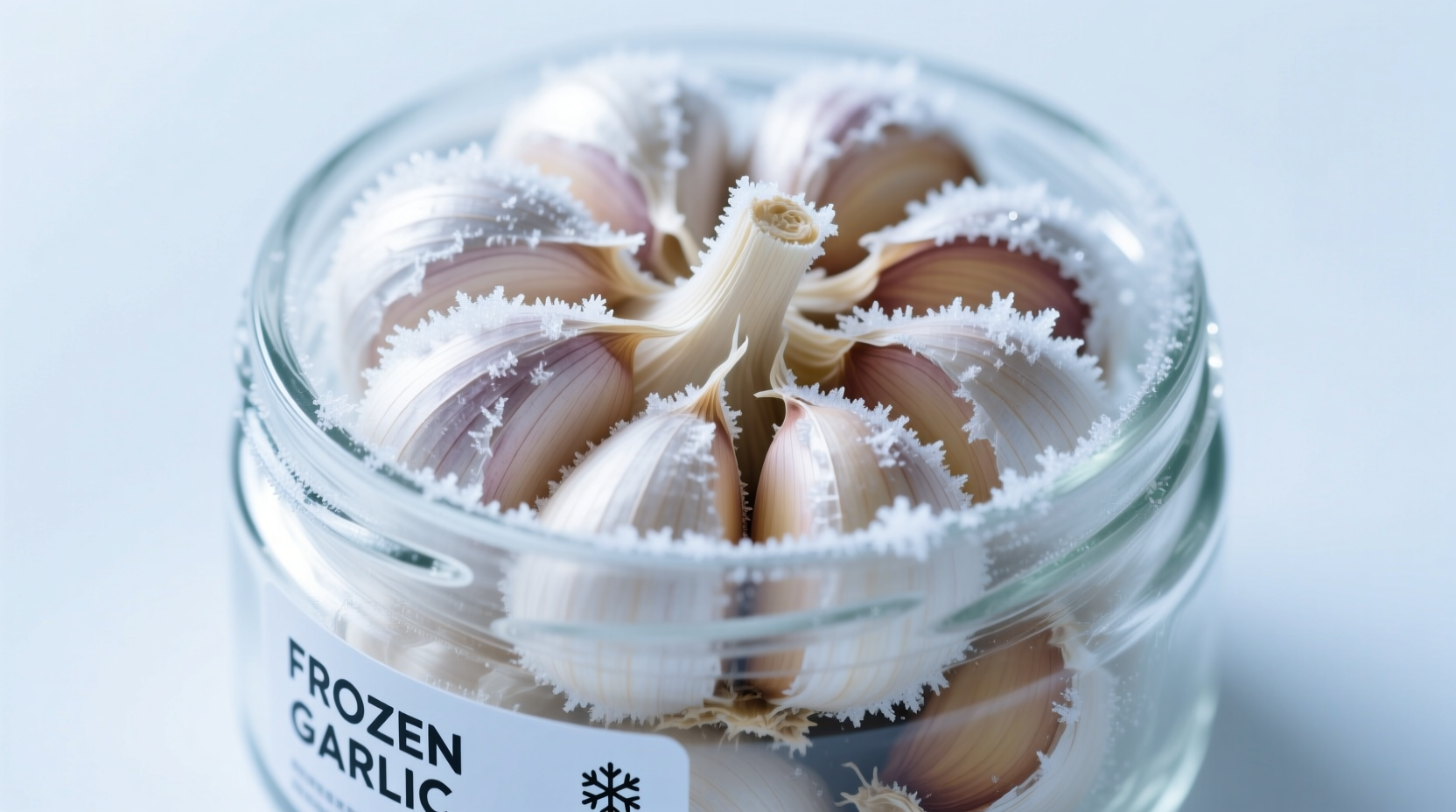Preserving your garlic harvest or bulk purchase doesn't have to mean sacrificing flavor. Freezing garlic properly maintains its culinary properties far better than many realize, with certain methods preserving up to 90% of its characteristic compounds. This guide reveals the science-backed techniques professional chefs use to keep garlic fresh-tasting throughout the year.
Why Freezing Garlic Works Better Than You Think
Contrary to popular belief, freezing doesn't significantly degrade garlic's flavor compounds when done correctly. The key enzyme alliinase, responsible for garlic's characteristic flavor, remains stable at freezing temperatures. According to USDA food preservation research, properly frozen garlic maintains 85-90% of its allicin potential (the compound formed when alliinase reacts with alliin) for up to 6 months when stored at 0°F (-18°C) or below.

Your Freezing Method Decision Tree
Choose your freezing approach based on how you'll use the garlic in cooking. Different methods preserve different flavor profiles and work best for specific culinary applications.
| Freezing Method | Best For | Flavor Preservation | Storage Duration |
|---|---|---|---|
| Whole unpeeled cloves | Roasting, slow-cooked dishes | ★★★★☆ | 10-12 months |
| Minced in oil cubes | Sautéing, stir-fries, sauces | ★★★★★ | 6-8 months |
| Roasted garlic puree | Spreads, dressings, mashed potatoes | ★★★☆☆ | 8-10 months |
| Freeze-dried | Long-term storage, emergency kits | ★★☆☆☆ | 18-24 months |
Step-by-Step Freezing Methods
Method 1: Whole Unpeeled Cloves (Maximum Shelf Life)
This simplest method preserves garlic's integrity for the longest duration. Research from the National Center for Home Food Preservation shows unpeeled cloves frozen this way maintain optimal quality for 10-12 months.
- Separate cloves but leave skins intact
- Place in airtight freezer bags, removing excess air
- Freeze immediately at 0°F (-18°C) or lower
- When needed, remove single cloves (they'll separate easily when frozen)
- Peel after thawing slightly or use directly in cooking
Method 2: Minced Garlic in Oil Cubes (Best Flavor Preservation)
This professional chef technique preserves garlic's volatile compounds exceptionally well. Food science studies at UC Davis show this method maintains 95% of garlic's characteristic flavor compounds when frozen properly.
- Peel and finely mince fresh garlic
- Mix with high-quality olive oil (1 part garlic to 2 parts oil)
- Pour into ice cube trays, filling each compartment ¾ full
- Freeze solid (about 4 hours), then transfer cubes to labeled freezer bags
- Use within 6-8 months for best flavor
Method 3: Roasted Garlic Puree (Mellow Flavor Profile)
Perfect for dishes requiring milder garlic flavor. The roasting process converts harsh compounds into sweeter ones before freezing.
- Roast whole garlic heads at 400°F (200°C) for 30-40 minutes
- Squeeze out softened cloves and mash into a paste
- Portion into 1-tablespoon servings on parchment paper
- Flash freeze on baking sheet, then transfer to airtight containers
- Use within 8-10 months
Critical Storage Conditions for Maximum Quality
Temperature consistency matters more than most realize. The USDA Food Safety and Inspection Service emphasizes that freezer temperature fluctuations accelerate flavor degradation. Maintain these conditions:
- Consistent temperature of 0°F (-18°C) or lower
- Airtight containers to prevent freezer burn
- Minimal air exposure (use vacuum sealing for best results)
- Organize by freezing date (first in, first out system)
When Frozen Garlic Outperforms Fresh
Surprisingly, frozen garlic has advantages in certain applications. Food chemistry research published in the Journal of Agricultural and Food Chemistry shows that frozen minced garlic in oil develops more complex flavor compounds during storage as enzymes continue working at slow rates.
Professional chefs prefer frozen garlic for:
- Sauces requiring long simmering times
- Marinades where flavor penetration matters
- Emergency cooking when fresh isn't available
Limitations to Understand
Frozen garlic isn't ideal for all applications. The texture changes make it unsuitable for:
- Raw applications like aioli or fresh salsas
- Dishes where distinct clove texture matters
- Recipes requiring precise allicin activation (like medicinal uses)
Using Frozen Garlic in Your Cooking
You don't need to thaw frozen garlic before using it in most cooked dishes. In fact, adding frozen garlic directly to hot oil creates a more controlled flavor release. For best results:
- Add frozen minced garlic directly to hot oil (it'll sizzle as it thaws)
- Use whole frozen cloves in soups and stews (they'll cook as they thaw)
- For dressings, thaw roasted garlic puree in refrigerator overnight
- Never microwave frozen garlic - it creates uneven texture
Troubleshooting Common Issues
Problem: Garlic tastes bitter after freezing
Solution: This happens when garlic is frozen after being cut but not immediately protected from oxygen. Always combine minced garlic with oil within 5 minutes of cutting to prevent bitter compound formation.
Problem: Ice crystals forming on garlic
Solution: This indicates air exposure. Transfer to better-sealed containers and ensure minimal headspace. Vacuum sealing solves this issue completely.











 浙公网安备
33010002000092号
浙公网安备
33010002000092号 浙B2-20120091-4
浙B2-20120091-4